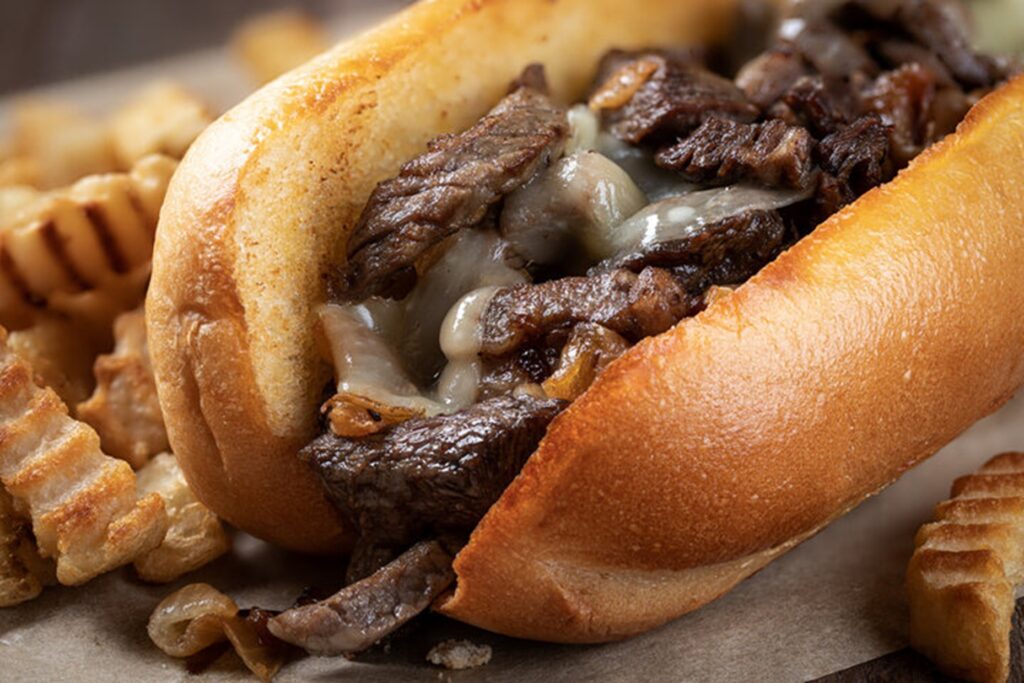The Anatomy of a Real Philly Cheesesteak: What Makes It Different Everywhere Else
Few foods carry as much identity, pride, and debate as Philly cheesesteaks. They’re not just sandwiches – they’re a declaration of where you’re from, what you value in flavor, and how you define authenticity. The moment you bite into one, you know if it’s the real thing or a well-intentioned imitation. And as this Philadelphia staple makes its way into kitchens from Virginia to Maryland, the question isn’t whether it’s good – it’s whether it’s Philly good.
What Defines a True Cheesesteak
A real, truly authentic cheesesteak doesn’t need a lot of headlines or shout-outs to be known. There are three main components that make all the difference, and these three are impossible to replicate.
Start with the bread: a proper roll should be crisp at first bite, then yield to the heat of the meat and cheese without falling apart. Amoroso-style or Liscio rolls are traditional not by nostalgia but by engineering – they balance density and air perfectly.
Then comes the rib-eye: thinly sliced, grilled with precision, and seasoned sparingly. Its flavor should carry the sandwich, not compete with it.
And finally, the cheese – Whiz, provolone, or American – chosen not for trend but for melt. That seamless union of beef, cheese, and bread is what makes the sandwich less of a meal and more of a memory.
Why Replicas Rarely Measure Up
As Philly cheesesteaks spread beyond city lines, regional variations have multiplied. Some swap rib-eye for sirloin, others use hoagie rolls or even ciabatta, and many overload with toppings to make up for what the basics lack.
The result? A good sandwich – but not a cheesesteak. Authenticity here is about restraint. The magic of the original lies in knowing what not to add. Mushrooms, peppers, and sauces have their place, but never at the cost of balance. Each element should play a supporting role, not rewrite the story.
Bread, Geography, and the Taste of Place
The Philadelphia version is unmatched in part because of the city’s water chemistry, which influences the dough’s fermentation and gives the rolls their distinctive chew. New York bagels are unique due to the same phenomenon. Therefore, the roll may taste slightly different when a cheesesteak is reproduced in Baltimore or Arlington – not incorrect, but localized.
Replication becomes adaptation as a result of this minute change. A food absorbs its environment more the farther it travels. In this way, a culinary sign transforms from a static formula into a living tradition.
The Cultural Thread That Binds It All
Philly cheesesteaks have cultural significance in addition to taste. They stand for hometown pride, late-night appetites, and blue-collar tenacity. The same routine can be found in any South Philadelphia steakhouse: orders being yelled, grills hissing, and locals arguing over who has the best “wit” and “wit-out.” Imitators are unable to replicate this ritual exactly.
The rhythm of a community, the unwritten language of a line that encircles the block, and the loyalty that maintains it that way are more important than elements alone.
Expansion Without Dilution
As the cheesesteak moves south and west, success will depend on preserving its core identity while allowing for local personality. Virginia might favor sharper cheese or a touch more onion. Maryland might fold in regional bread makers or pair it with craft brews.
These variations aren’t dilution – they’re evolution. What matters is that every bite still honors the integrity of what started on a hot grill in Philadelphia: thinly sliced beef, melted cheese, and bread that holds it all together like a promise.
The Fine Line Between Adaptation and Authenticity
Each area that embraces the cheesesteak contributes a unique voice to the chorus. However, understanding is more important for preserving authenticity than imitation. Craftsmanship and purpose are what make the Philly original so special: balance in texture, accuracy in cooking, and an unconscious appreciation for simplicity.
When a restaurant outside Philadelphia takes the time to understand those principles, the result isn’t imitation; it’s homage. That’s why the best versions found beyond city limits still feel like they belong to the same family – they carry the DNA of the original, even when expressed in a different accent.
In the end, Philly cheesesteaks aren’t defined by geography alone. They’re defined by craftsmanship, precision, and respect for a lineage that has fed generations of night-shift workers, sports fans, and curious newcomers alike. The secret isn’t a recipe – it’s conviction. And that’s something that travels well anywhere.






